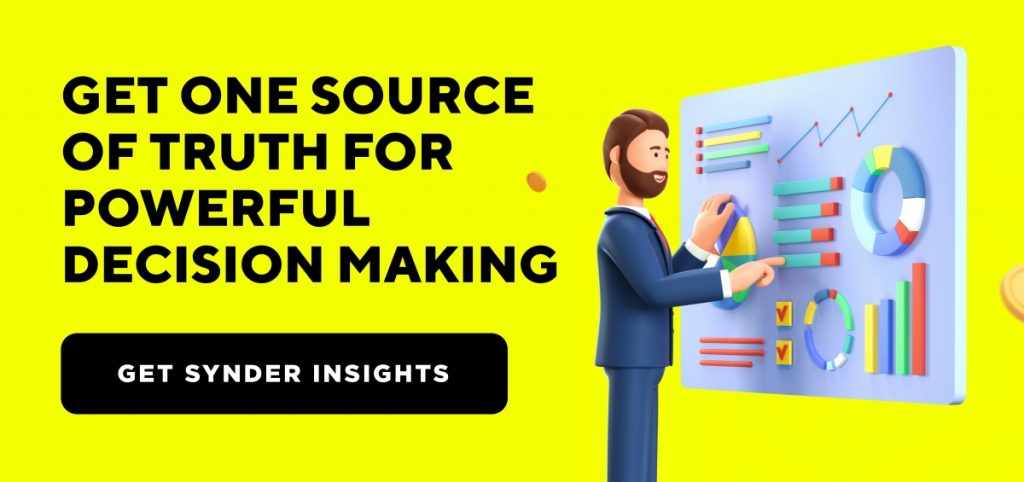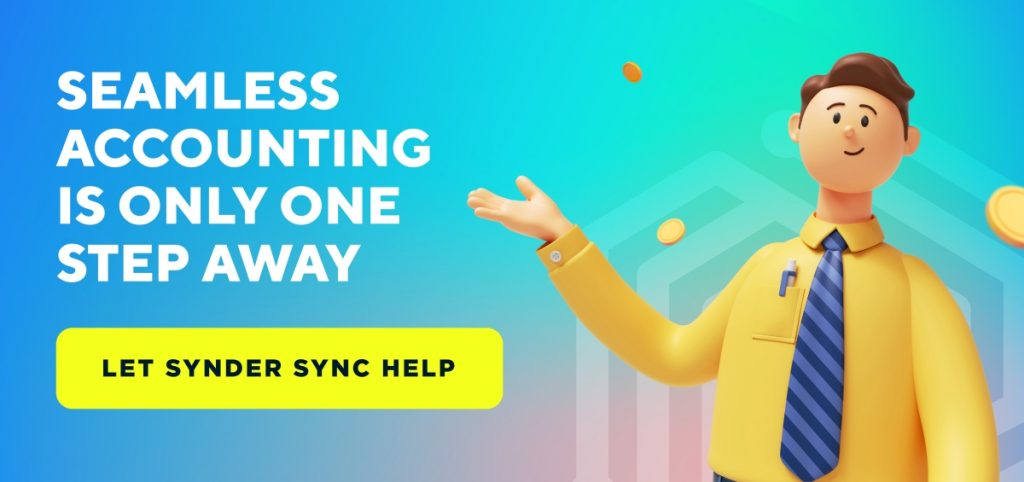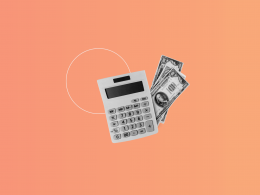More and more people are shopping online. What does it mean for small businesses? You guessed it! There are more opportunities today to start selling online successfully than ever before. Dropshipping is one of the options. However your need to know how to manage your business efficiently.
This article answers the questions for anyone curious about how to start a dropshipping business: What is dropshipping? How does it work? How can you find a dropshipping niche? What are the best products to sell online?
Are you in? Let’s start!
Contents:
1. What is a dropshipping business?
2. Who is a dropshipper in the dropshipping business model?
3. Why start a dropshipping business?
4. Is this business model for me?
5. How to start making money with dropshipping business?
7. How does dropshipping business work?
8. The role of dropshipping suppliers
9. How to start dropshipping: a simple business guide
What is a dropshipping business?
Dropshipping is a special model of e-commerce business. Unlike typical online stores, a dropshipping business doesn’t work with inventory and order fulfillment directly.
All businesses that sell products online accept orders and ship goods to customers. But dropshipping stores don’t stock or deliver items to clients by themselves. The products are shipped from suppliers directly to customers.
In other words, a dropshipping shop:
- Doesn’t store products;
- Doesn’t pack products;
- Doesn’t ship products.
Roughly speaking, this type of business works simply as a storefront where items are sold and bought but those products are being held and shipped from another location – the supplier.
5 things your dropshipping business should do:
- Showcase products on a website or marketplace.
- Advertise on social media and implement online marketing.
- Accept online orders, providing a checkout experience.
- Transfer orders with shipment details to a supplier.
- Communicate with customers, processing returns and refunds.
Find out how to start dropshipping on Amazon and on Shopify.
Who is a dropshipper in the dropshipping business model?
This might seem like a redundant question or a simple one, but neither is true. In the dropshipping business model, a dropshipper is mostly defined as a person who ships and drops, and that’d point to the supplier. However, with the growth of e-commerce, the large marketplaces started to adopt their own definitions, adding unnecessary confusion, we might say.
So, if you sell your products on Amazon, the dropshipper is the supplier as explained on the Amazon site. However, if you also have a store on Shopify, it’s you – the business owner who’s called the dropshipper.
To avoid this confusion, in our guide we’ll stick to the most widely used definition of a dropshipper, meaning the supplier.
Why start a dropshipping business?
Online retail has been growing over the years, but the sudden coronavirus pandemic has forced people to shift many of their purchases to online shopping. This change in consumer behavior has affected market predictions and now the numbers look even more staggering regarding the market growth for e-commerce and dropshipping.
First, by looking at the e-commerce statistics we can see a great opportunity for businesses. According to Oberlo, the number of online shoppers in the US in 2023 will reach 218.8 million, that’s 65% of the entire population. Looking at worldwide e-commerce, it’s expected to take 20.8% of all retail sales in the world. These numbers point to a very large market for online retail.
Secondly, the dropshipping industry itself is expected to reach a global market valuation of $372.47 billion in 2025. Considering that the 2022 valuation stands at $196.78 billion, in only a few years, it’ll almost double in value. This makes it a perfect time to start a dropshipping business.
Thirdly, it’s a convenient way to grow an e-commerce business with a minimum starting budget.
Is this business model for me?
Like any business, it has its advantages and disadvantages. With dropshipping, what might seem like a benefit for some, looks like a drawback for others. Let’s check them out.
Little investment
To start a dropshipping business, you don’t need a big upfront investment, which is a very attractive option for those who want to be conservative when it comes to money, especially at the beginning.
Low control
Dropshipping business model promises to remove a lot of operations from a business owner’s hands – inventory and fulfillment being the main elements. That’s a clear advantage. However, the flip side of this benefit is the lack of direct control over that side of your business.
If there are any issues with the product you sell or the order fulfillment, there isn’t much you can do about it. For these business owners who want to have fuller control over those operations, this point is worth considering.
Omnichannel model
Running your own dropshipping store requires a willingness to run an omnichannel model since selling products using your own site only usually isn’t enough to lift your business off the ground.
Marketing
You‘re one of many sellers of the same products who are competing on the market, though that’s true not only for dropshipping business owners. That’s why to attract a large volume of customers you need to invest in your dropshipping business and its marketing.
However, if you’re interested in design and want to offer customers unique products, the print-on-demand industry might be a perfect fit. This type of dropshipping lets you unleash your creativity, add branding to your products and make them as personalized as you want.
How to start making money with dropshipping business?
Like in any other form of commerce, the income in a dropshipping business is formed by a margin. Dropshippers profit from the difference between the wholesale and retail prices of the products they sell. On top of the wholesale price come other business expenses. For example, if you need to hire employees, then payroll and payroll tax expenses will add up, and so on.
Ideally, dropshipping business owners make a gross profit margin of at least 30% – 40%, which means that after your expenses like shipping costs, fees, or taxes you should be aiming at a net profit of around 20%.
Some additional expenses your dropshipping business will incur:
- Dropshipping fees;
- E-commerce platforms fees;
- Sales taxes;
- Domain;
- Marketing campaigns.
This list of business expenses isn’t exhaustive but it roughly covers the main sources of expenses for small business owners who work within the dropshipping model.
When you’re running a dropshipping store, you’ll be primarily focused on marketing and customer acquisition. So, it’ll be more profitable to choose a niche with high-margin profits to concrete your marketing efforts on.
How to grow your business?
Normally, the growth of your business is directly linked to the amount of money you can invest and reinvest. However, since with dropshipping you don’t carry an inventory, it’s a different process from the very beginning. We already spoke about profit margins, let’s take a step further.
The rate of growth in dropshipping is more linked to marketing than anything else. Assuming that your customers are happy with the products you sell and customer service from your side is running smoothly.
Marketing opportunities
Every site you sell your products on usually has its own marketing options. While paid ad programs are an obvious choice, free advertising can also be found, though maybe not in the traditional sense of marketing.
Optimize keyword search
If you sell a great product, but your customers don’t seem to find it, changing the keyword might be the answer. Every sales platform usually has its own lists, so use them to your advantage – keyword really is the key.
Search Engine Optimization (SEO) offers sellers a chance to tailor their content using both long-tailed and short-tailed keywords to adequately capture the attention of the customer. This marketing opportunity is completely free unless, of course, you want to use paid software.
Leverage social media
Marketing opportunities on social media are plentiful, both free and paid options. Every social media platform has its own ad program so check those out and see what suits your business model and financial situation best.
When it comes to marketing on social media, this happens through not only advertising your products on a particular site but by engaging with your audience and providing value. Share stories and connect with your customers.
By definition, social media is a place to be social, so reach out for feedback and testimonials, ask for a suggestion, and a use case. Gaining social proof is increasingly important when selling products and services.
Whichever social media platform you choose to connect to your dropshipping business, make sure it showcases your products best. Those with strong picture-based content like Pinterest and Instagram or those with video-based content like YouTube and TikTok are usually good contenders to use for social media marketing.
Start a blog
If you’re using your own domain for selling products, starting a blog there can be a good free marketing strategy. It’s important to create content that your prospective customers might find helpful or inspiring. It’s a good way to establish a relationship between your brand and your audience.
The more visitors your site will have, the more chances that some of those people will want to buy your product, which is also known as the conversion rate. To create blog content, think of the ways your products can solve problems that your customers might have. Tutorials and guides are a great way to grow the viewership.
Choose analytical software for your business
Dropshipping success relies heavily on your marketing efforts, that’s why choosing the right software that can guide your strategies is so important.
When you sell on multiple channels, you want to see your entire business and compare how different platforms perform. Analytical software like Business Insights provides you with rich data based on your sales and customer behavior across all your channels.
Find out what your top-performing products, gross sales, average order value, top-performing customers, top refunded products, products most purchased together, and many more are. Check out the full list of reporting features.
With Synder Insights, you don’t need to perform any calculations or analysis due to its user-friendly interface. The software gives you ready-made insights in the form of reports. This makes it easy to understand and implement in your marketing strategies.
How does dropshipping business work?
So, you’ve decided that dropshipping suits you perfectly. That’s great! Time to learn even more about the dropshipping business. The biggest question you have by now is probably: If a dropshipping store doesn’t keep and deliver products, how does this business operate?
In brief, dropshipping works in the form of supply chain management. In this chain, a dropshipping store is responsible for attracting a customer and closing the deal.
Dropshipping business model
Dropshipping stores attract clients, take their orders, receive payments online for the products the shoppers want to buy, and then transfer these orders with full shipment details to a dropshipping supplier. The dropshipping supplier processes orders, packs, and ships purchased items to customers.
Here’s what a business process for your dropshipping business will look like:
- A customer places an order and pays for the products in your online store.
- You transfer the order and shipping information to your dropshipping supplier.
- Once the order is received, the supplier bills you for the item ordered.
- You pay the price, which usually includes wholesale plus a dropshipping fee.
- The dropshipping supplier packages the products and ships them directly to the customer.
Dropshipping business plan
To set up a successful dropshipping business, a robust business plan is a must. This is an essential step that shouldn’t be skipped even if the initial investment of money is relatively low, like with dropshipping.
It requires that you research all necessary information providing you with actionable data insights. Without it, you can’t assess where your business currently stands and where and how it should move forward to grow.
We’ve created a detailed guide on how to make an e-commerce business plan. So here we’ll just summarize the main points.
- Executive summary – introduction of your business, its goals, and objectives in an actionable manner. This section, even though it appears first, should be written last as it provides a good overview of the entire plan.
- Company analysis – background of the company, with its mission and vision, business model, and description of its members.
- Market analysis – search for trending products, check your key competitors, and look for unsaturated niches.
- Product or service analysis – what you offer described in detail, what the competitive advantage of your product or service is, and what its weaknesses are.
- Customer analysis – create your ideal customer profile, customer cohorts, and find out who your actual customers are.
- Marketing strategy – create a marketing plan, define advertising channels, and what paid and free strategies you’ll be utilizing.
- Logistics and operations – with dropshipping, this section relates to your suppliers – choosing them and the criteria for working with them.
- Financial plan – present the financial situation of your business, usually by producing 3 main financial statements i.e. a balance sheet, income statement, and cash flow statement. For a brand new business, a breakdown of expected revenues and expenses as well as future growth predictions is a good alternative.
Even if your dropshipping business plan will be seen by you only and not used to attract investments, it’s an invaluable tool in steering your business in the right direction.
The role of dropshipping suppliers
When you run a dropshipping business, you don’t deal with the products you sell. You may order sample items for a catalog photo shoot, but apart from that, you never actually hold the products in your hands. All things connected to physical inventory are performed by dropshipping suppliers — or dropshippers.
What dropshipping suppliers do for you:
- Manufacture the products;
- Perform quality control;
- Store products in their warehouses;
- Manage inventory;
- Pack and ship orders to the customers.
As you can see, a significant part of the dropshipping business process is outsourced to third parties. Your online business will depend on them to complete the order fulfillment steps from receiving, processing, packing, and picking to shipping an online order to your customers. That’s why you need to find dropshipping suppliers that are trustworthy and reliable.
How to start dropshipping: a simple business guide
No two businesses are exactly alike. There will be something unique about yours too. But generally, to start a dropshipping business, you need to complete these 5 simple steps.
1. Figure out your dropshipping niche
To connect with customers quickly, you need to be very specific about your niche. A niche is a segment of a market you want to take. It helps you understand what you want to sell, what is unique about your product, and target your audience. Take a moment to think about what your dropshipping niche can be.
Don’t choose a niche that’s already saturated and dominated by big players. It’ll be challenging to promote your product and grow your business. To get noticed by the audience, be as specific with your niche as possible.
For example, toothbrushes are a niche in the hygiene market. Eco-friendly bamboo toothbrushes are a specific niche of the toothbrushes niche.
How to find a perfect dropshipping niche:
- Select an area of your interest. If you’re running a business where you should focus on selling and advertising, it’s best to be passionate about it.
- Do supplier and competitor research. Find out if the products you aim at are available for dropshipping and that no major brand has already taken the niche.
- Scratch an itch. Look for problems that you can solve, how you can stand out from competitors, and create a unique offer that’ll attract online shoppers.
- Make sure people want it. You need to know that people are interested in what you want to offer. You can use the Google Trends tool to check what people are searching for.
2. Find the best dropshipping products to sell
In theory, you can sell anything online. Still, some products are more suitable as they’re easier to work with and bring more money to your bank account.
When choosing the best dropshipping products, look for something that is:
- Small and lightweight – you don’t want those shipping fees to eat up the margin, right?
- Evergreen – non-seasonal products will ensure your business brings cash flow year-round.
- Priced $15-200 – this “sweet spot of e-commerce” warrants a good demand.
3. Open a dropshipping store
There are plenty of online platforms today that are suitable for dropshipping. The right selling platform is crucial to the success of your online business. But which platform will be the best for your product and your audience?
You have 4 options to choose from:
- Sell on popular marketplaces like Amazon, eBay, Etsy, and many more. This is probably the most popular choice when you start dropshipping. It’s easy for everyone to set up an account and start selling online, regardless of their previous experience. Well-established marketplaces already attract a tremendous amount of traffic globally.
- Build your own e-commerce site on Shopify, Magento, or BigCommerce platforms. Best for those who want to build a brand and have more control over design, user experience, payment options, and analytics. Your own dropshipping business store is the ultimate option for building a recognizable company and long-term relationships with customers.
- Sell on social media: Instagram, Facebook, TikTok, and many more. Selling on social media is perfect for people who have an audience and massive followership. It’s also suitable to test business ideas and start selling online quickly. For example, Synder can help you get paid on Instagram easily. Just put a payment link in your bio, leading followers to a credit card payment page.
- Use a combination of sales channels. E-commerce trends oblige sellers to offer customers an omnichannel shopping experience. Maybe you won’t need all of the above. But it’s a good idea to test and see what channels work best for you and your audience.
4. Get dropshipping business store management
While every platform you’ll sell on provides you with important information regarding the management of your individual store, what’s usually missing with selling on multiple channels is the integrated view of your business as a whole.
Synder Sync lets you do just that, connecting all your sales channels and payment platforms to your accounting software. It has more than 25 integrations including popular marketplace platforms like Amazon, Shopify, eBay, Etsy, and WooCommerce as well as payment gateways like Stripe, PayPal, Square, or Afterpay. Synder Sync is constantly adding new integrations for its customers based on the feedback. Visit this page for a full list of integrations.
No need for manual data entry as everything happens automatically. Synder Sync uses the most detailed transactional information including time stamp, amount, billing address, and more. This ensures accurate data imports and that there are no duplicates in your accounting books.
It all makes Synder Sync an ideal partner for dropshipping business owners who use more than one channel or marketplace in their operations.
5. Find a dropshipping center
Partnering with the wrong dropshipper can cost you a fortune. Finding the right dropshipping center is essential for your business to operate smoothly and have satisfied customers. After all, you entrust this company with your reputation.
First of all, understand who can perform as a dropshipping center for your business:
- Manufacturer;
- Wholesaler;
- Another retailer;
- Fulfillment house.
Then carry out research and choose a good dropshipping supplier who should:
- Offer dropshipping as a service. Some companies are simply wholesalers or manufacturers. Make sure the supplier you’re contacting is a dropshipper.
- Have proven experience and endorsement. Dropshippers take on a lot of responsibility, so you want to be confident that you can count on them at all times.
- Provide fast shipping and low fees. You’d probably want to offer your customers low shipping and get their items as fast as possible.
- Have quality product photos. The supplier should ideally have high-quality images, so you can see the product and use the photos in your product descriptions. A photo enhancer can further improve clarity and lighting, helping your product images look more polished and appealing to buyers.
- Send product samples. Always request product samples to test the quality of items before signing a contract with a supplier.
6. Pick a preferable shipping method
As an owner of a dropshipping business, you have little to no control over the quality of the products you sell. However, you can have more flexibility in choosing the way your products will be packed and shipped.
Pick a shipping method:
- Blind shipping. Shipping products without a return address corresponding to the seller.
- Private label shipping. Having items shipped from the wholesaler with a return address customized to your company.
- Fulfillment house. With an ultimate order fulfiller, you might also get a customized packing slip, including details such as your company name, logo, and contact information.
7. Get free business tools dropshipping businesses use
There are free extensions and accounting software for dropshipping available that can make the life of business owners easier.
First and foremost, the platforms that you use for dropshipping and your suppliers have rich data that can be leveraged to your advantage. Make sure to check out all the possible avenues within the channels you already use. Also, use provided guides to optimize the content you post. Every marketplace you sell on gives information to help you reap the most benefits of using their services. Once you’ve exhausted those ways, venture out and try some free business tools that help with dropshipping.
One of the best and most comprehensive free tools is CJDropshipping. It’s a dropshipping supplier that integrates with platforms such as Amazon, eBay, Shopify, Woocommerce, Lazada, and Shopee. It takes care of product sourcing, packaging, and shipping while operating worldwide.
To find the best products to sell on Shopify you can use the free Commerce Inspector extension. For keyword search, try using Ubersuggest or Google Keyword Planner.
If you want to have a peek at your competition, why not use Similarweb?
There are many other helpful tools that are linked to dropshipping and helpful in running a business or creating content, so make sure you check out those too.
Is dropshipping worth it?
Dropshipping almost seems too good to be true, with claims of easy profits and effortless sales. And while that can be true for some, you can profit as long as you understand the risks and stick to a thought-out financial plan.
Many people start a dropshipping business but quit shortly afterward. One of the reasons is the lack of persistence and poor planning. So let’s look at the pros and cons of dropshipping.
Pros and cons of dropshipping
To understand if the dropshipping business is right for you, you need to weigh all the pros and cons.
| PROS of Dropshipping | CONS of Dropshipping |
|---|---|
| You just need a computer and an internet connection to get started. | Little or no control over product quality. |
| No big starting budget is required. You don’t spend a lot of money on purchasing products until the customer pays for them. | Order fulfillment and shipping delays are beyond your control. |
| No workforce and time spent on packing and shipping tasks. | The need to invest in online marketing and promotion. |
| You don’t have to allocate a budget for maintaining a warehouse and storing products. | Discover the best pricing strategy and carry out the sales strategy. |
| No inventory management is needed. | Putting extra effort into creating an attractive online catalog and checkout user experience. |
| A dropshipping business needs fewer people hired to operate correctly, as a big part of the work is done by dropshipping centers or automated by software. | Frequent returns. Online shoppers return around 18% of all online purchases. With the potential unreliability of dropshipping suppliers, you may find that your products are returned more frequently. |
Final Thoughts
To summarize, dropshipping implies selling products online without actually handling their fulfillment and shipping. This business has a low barrier to entry, which allows both novices and professionals to pick a niche and run their e-commerce store.
Choosing a niche is the first step to starting a dropshipping business. The rising popularity of this type of trade makes it harder to find niches that aren’t already saturated. However, the demand for online shopping is growing progressively, which creates new opportunities for small business owners to begin dropshipping.
Having trusted software can help you on that journey ensuring that your finances are accurately recorded and your marketing efforts are data-driven.
Interested in more accounting tips? Look at the best small business accounting software!

.png)






